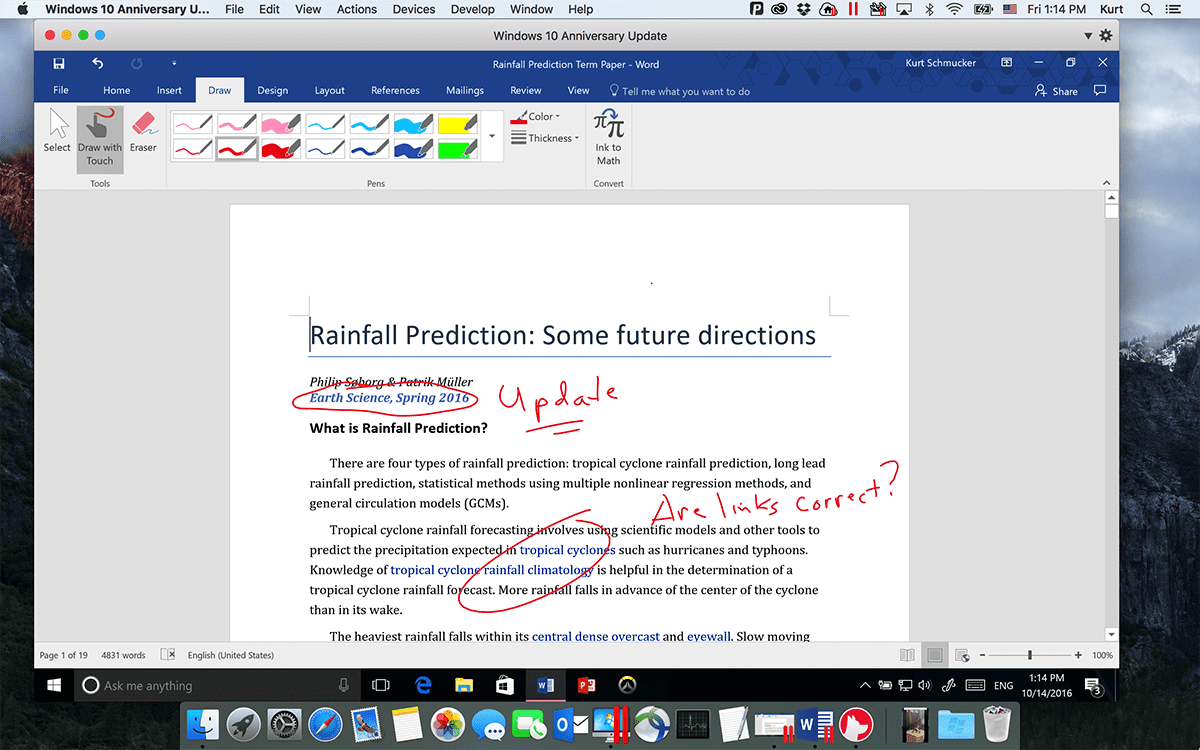

In the View Options dialog box, select Show Library Folder and save.īack in Finder, open Library > Containers and ctrl+click each of these folders and Move to Trash. The information in this article applies to Word 2013, Word 2016, Word 2019, and Word for Microsoft 365 on PC/Windows. On the Finder menu at the top, click View > as List, and then click View > Show View Options. To remove files from your user Library folder, you'll need to first set the Finder View options. Remove files from your user Library folder Remove Office 2016 for Mac applicationsĬommand +click to select all of the Office 2016 for Mac applications.Ĭtrl+click an application you selected and click Move to Trash.Ģ.
#Word 2016 for mac delete a comment password
You must be signed in as an administrator on the mac or provide an administrator name and password to complete these steps.ġ. You can also perform a complete uninstall for Office 2016 for Mac if you are troubleshooting an issue. Once you've removed everything, empty the Trash and restart your Mac to complete the process.

Comments can also be used to issue formatting requests to the layout team, graphic design crew, or printer.To uninstall Office 2016 for Mac, move the applications and user preference files to the Trash. When you’re reviewing a collaborative document, comments are often necessary to explain or suggest an edit. Also, to turn off track changes, click the Track Changes button again, and it changes from blue back to white. This is particularly important when collaborating with a large group. Tip: You can also delete a comment by holding down the Ctrl key while you click the comment, and then click Delete.

On the Review tab, click Delete, and then click Delete again, or choose an option to delete all the comments on the slide or in the presentation. When you’re finished, save the document with a new filename to denote the modified version. Click the comment thumbnail you want to delete. When finished, choose Reject All Changes to globally reject all the remaining edits. If for some reason you don’t agree with most of your colleagues’ changes, click Accept on the ones you want to keep and choose Accept This Change from the list box. When finished, click Accept > Accept All Changes to globally accept all the remaining edits. When you see a change you don’t like, place your cursor anywhere on the marked change, click Reject, then choose Reject Change from the list box. Skim the document toggling between Simple Markup and All Markup. In fact, this is the quickest and easiest way to get through the process. Click the Review tab, click Show Markup, and uncheck the Comments option to hide comments. Now you can review the document with the multi-colored edits on or off as you prefer.Ĭlick the track lines to toggle between Simple Markup (red) and All Markup (gray). Find the comment you want to delete, right-click the comment, and click Delete Comment to delete a comment. As you read through the text, click the track line to toggle between All Markup (line turns gray) and Simple Markup (line turns red). Simple Markup just displays a red vertical track line adjacent to each line of text with changes. Fortunately, Word 2013 offers an additional option called Simple Markup, which is now the default choice when you turn on Track Changes. In Microsoft Word 2013, choose All Markup to see every contributor’s changes.Īll those visible changes can be distracting when you’re reading a document. Also, notice the gray vertical track lines in the left margin, which indicate a change on the adjacent line. When the All Markup option is selected, the tracked document displays with all changes by all users, with each users’ edits in a different color. In older Excel versions the controls are available on two toolbars the Forms toolbar and the Control toolbox toolbar. will apply to all Office 2016 and higher for Mac apps, including Word, Excel, Powerpoint.
#Word 2016 for mac delete a comment for free
Once you’ve opened the document you’ll be reviewing, select the Review tab, click the Track Changes button, then select Track Changes from the list box to turn on this feature. Collaborate for free with an online version of Microsoft Word. We’re confident that by the time you’re done you’ll wonder how you ever lived without it. It’s enough to make you want to put a big red “X” on the whole thing.īut before you do, read through our guide to safely-and sanely-navigating a multi-authored document using track changes. It’s one of the most useful tools for collaboration, but in practice a marked-up document can quickly overwhelm with its tangle of additions, deletions, and comments all displayed in multiple colors-one for each contributor. If you’ve ever opened a document that had more strikeouts than a beer-league ballplayer, you’re familiar with Microsoft Word’s “track changes” feature.


 0 kommentar(er)
0 kommentar(er)
